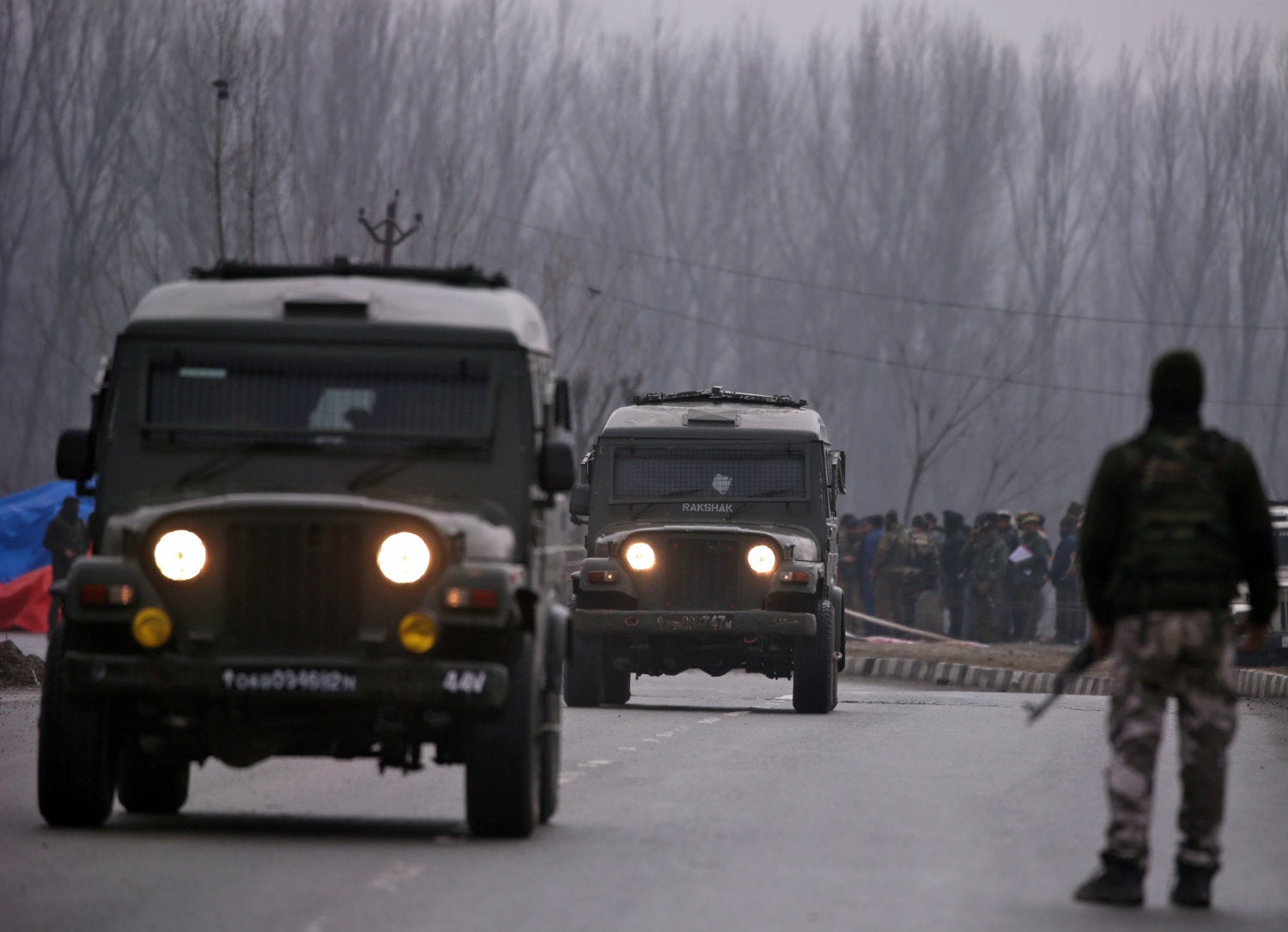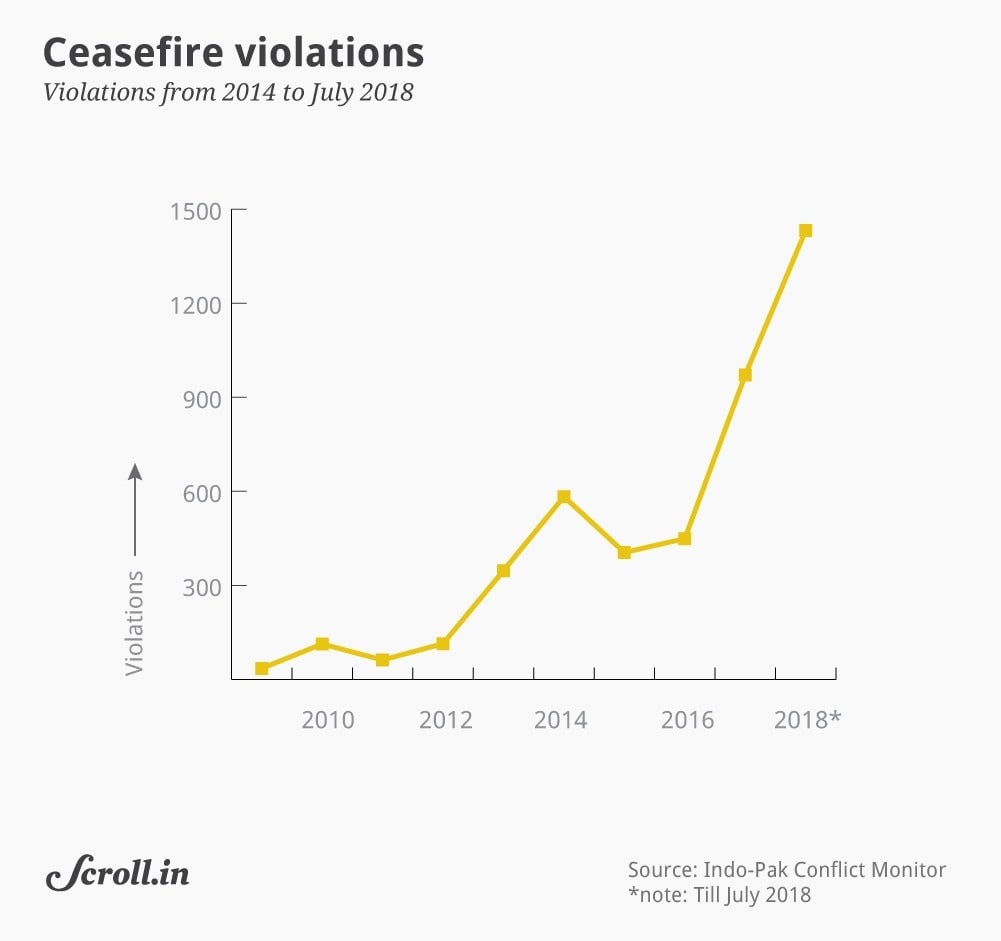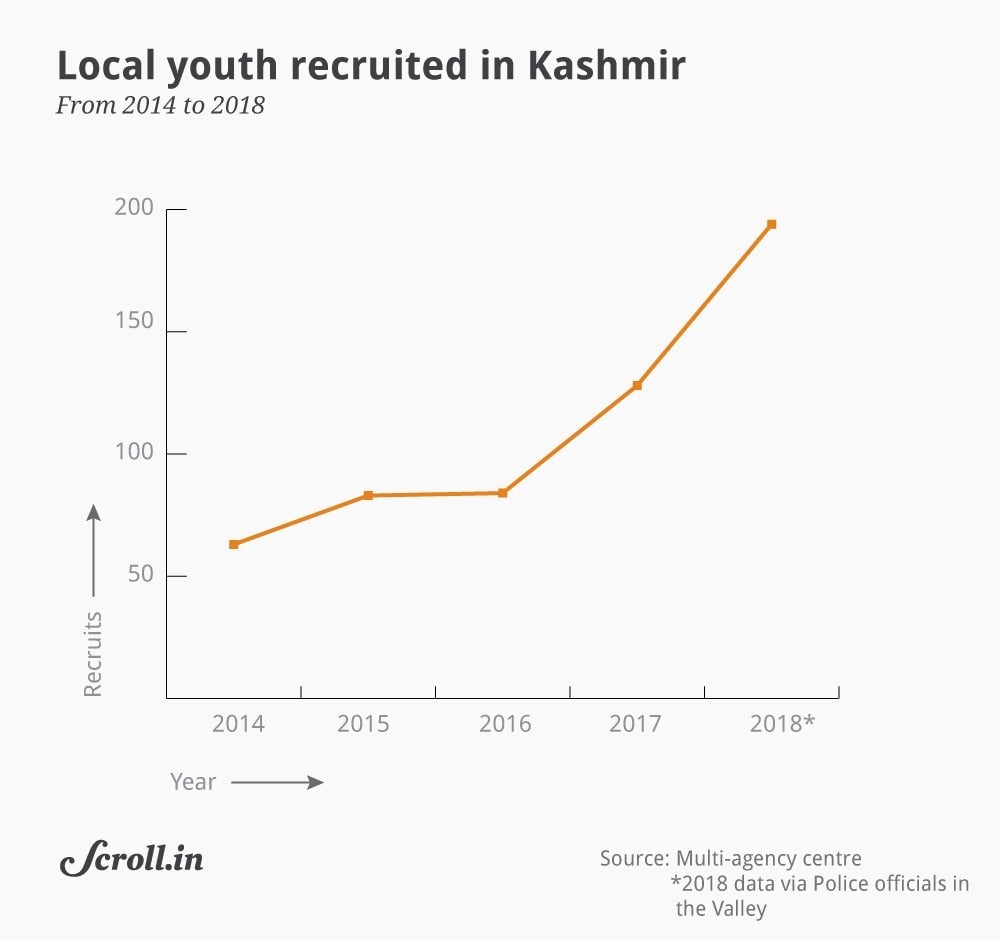How the Narendra Modi government let Kashmir slide into chaos again
In the run up to the Lok Sabha elections of 2014, then prime ministerial candidate Narendra Modi sought a debate on Article 370, the constitutional provision meant to protect the autonomy of Jammu & Kashmir. For the Bharatiya Janata Party (BJP), which had made the abrogation of Article 370 part of its core agenda, this was a softening of sorts. A new conciliatory mood seemed to be coupled with promises of development for the conflict-torn state. But when Modi made his first prime ministerial visit to Kashmir, he was met with shutdowns organised by separatist leaders.


In the run up to the Lok Sabha elections of 2014, then prime ministerial candidate Narendra Modi sought a debate on Article 370, the constitutional provision meant to protect the autonomy of Jammu & Kashmir. For the Bharatiya Janata Party (BJP), which had made the abrogation of Article 370 part of its core agenda, this was a softening of sorts. A new conciliatory mood seemed to be coupled with promises of development for the conflict-torn state. But when Modi made his first prime ministerial visit to Kashmir, he was met with shutdowns organised by separatist leaders.
Modi persisted in his attentions, which culminated with the symbolic Diwali visit in October 2014. Soon afterwards, he promised Rs80,000 crore ($11.2 billion) in central aid to the flood-ravaged Valley. After the assembly elections of December 2014, the BJP came to power in Jammu & Kashmir for the first time, joining a coalition government led by the People’s Democratic Party (PDP).
Since then, the state has seen the rise of militancy, mass protests against the government, a growing death toll, a drift away from electoral politics and polarisation between Muslim-majority Kashmir and Hindu-majority Jammu. In June 2018, the state government collapsed as the BJP walked out of the coalition and governor’s rule was imposed.
Overall, the centre has relied on a military response to militancy and civilian protests in the valley and an increasingly heated Line of Control (LoC).
The Burhan Wani generation
Early in 2015, a poster of 11 militants posing with guns went viral in Kashmir. Local militancy, which had almost died out after the early 2000s, seemed to have entered a new phase, powered by the social media outreach of Burhan Wani, the Hizbul Mujahideen commander who became a household name in the Valley and was killed in 2016.
Estimates of how many youth have joined up vary, but figures compiled by the Multi-Agency Centre, the nodal body for sharing intelligence outputs, show the rising graph of local militancy over the past few years: from 63 militants recruited in 2014, the number doubled to 128 in 2017. In 2018, 82 had joined militant ranks till just July.

As recruitment swelled, so did anti-militancy operations. In 2017, Operation All Out was launched by security forces, resulting in frequent gunfights which killed 213 militants that year. Already in 2018, as many as 225 militants have been killed.
Meanwhile, civilians began rushing in between militants and security forces. This has meant a heavy civilian death toll in gunfights as well: 51 in 2017 and 50 in 2018. The government remained silent as army chief Bipin Rawat said civilians who intervened in gunfights would be treated as “terrorists.”
Protests of 2016
The drift between government and the civilian population sharpened in the mass protests of 2016, sparked off by Wani’s killing on July 08 that year. The next few months would see curfew and internet shutdowns imposed by the state administration and strikes called by the separatist leadership. Stone pelters chanting slogans for “azadi” (freedom) were met with bullets and shotgun pellets fired by security forces. Close to 100 civilians were killed and hundreds more blinded or maimed.
Meanwhile, in parliament, jingoistic speeches asserted that Kashmir was an “integral part” of India and blamed Pakistan for fomenting unrest. Modi, whose frequent visits to the Valley had long ended, broke his silence more than a month into the protests. Youth in the Valley should have “laptops,” not “stones” in their hands, the prime minister said, invoking the old binary between “terror” and “development.”
Surgical strikes
Delhi’s answer to the protests and rising ceasefire violations was a fresh show of strength against Pakistan. On Sept. 28, the army announced that they had conducted “surgical strikes” along the Line of Control, killing militants lodged in “terror launchpads” in Pakistan-occupied-Kashmir.
If the alleged strikes were meant to curb ceasefire violations, they did not work. The Indo-Pak Conflict Monitor has compiled both Indian and Pakistani estimates of ceasefire violations over the years. According to Indian estimates, there were 583 violations in 2014, 405 in 2015, 449 in 2016, 971 in 2017, and 1,432 in 2018. The figures also show a sharp rise from the United Progressive Alliance years.

The human shield
In the Valley, sporadic protests continued, spiking during the Lok Sabha bye-polls in April 2017, where at least eight civilians were killed. It was also during these elections that Leetul Gogoi, an officer in the Indian Army, tied up a civilian to the front of a jeep, allegedly to ward off stone pelters. While pictures of the “human shield” went viral, sparking outrage in the Valley, Gogoi was commended by the army. His actions were also supported by then defence minister Arun Jaitley.
Attempts at dialogue
But in the Independence Day address that year, Modi suggested Delhi was willing to soften its approach: The Kashmir conflict could not be solved with bullets and abuse, he said, but by “embracing” Kashmiris. In October 2017, the centre appointed Dineshwar Sharma, a former chief of the Intelligence Bureau, to start engaging various stakeholders in Jammu & Kashmir. But the conditions for dialogue were not promising.
Shortly before the interlocutor was appointed the National Investigation Agency started a crackdown on separatist leaders, charging them with involvement in “terror funding.” Besides, the scope of Sharma’s engagement was circumscribed. The Centre announced he was to hold dialogue to understand the “legitimate aspirations” of the people. It soon became clear that these aspirations did not extend even to demands for greater autonomy, let alone “azadi”. When Congress leader P Chidambaram suggested the “azadi” demand really represented a desire for greater autonomy, Modi termed it an “insult” to soldiers at the front.
In May 2018, the centre announced a ceasefire for the month of Ramzan, an overture rejected by militant groups. After a month in which militant attacks on security forces escalated, the ceasefire was called off.
Hindutva mobilisations
While the conflict deepened, growing saffron mobilisations in Jammu, which had largely voted BJP, also had reverberations in the Valley. They peaked after an eight-year-old Muslim Bakerwal girl was allegedly gangraped and killed in Jammu’s Kathua district in January 2018. All the accused were Hindu. Rallies launched in defence of the accused were attended by prominent leaders of the BJP. Meanwhile, in the Kashmir Valley, there were protest marches demanding justice for the murdered child.
Government collapse
Soon after the ceasefire ended, the BJP walked out of the coalition and the state went under governor’s rule. In a valley already disillusioned with electoral politics, the collapse of the state government was greeted with indifference.
Anger against the government was apparent as early as June 2016, when bye-elections for the Anantnag assembly seat were held. Amid boycott calls by separatists, it was evident that the People’s Democratic Party, which came to power promising to keep saffron forces out of Kashmir, had lost support because of the alliance. After the protests, election turnouts touched record lows. In the violent Lok Sabha bye-elections of April 2017, it was 7.14% and bye-elections to the Anantnag Lok Sabha seat had to be postponed indefinitely.
After the coalition collapsed, regional parties made a last push to form the government. In November, an unprecedented coalition of the National Conference and the PDP, traditional rivals in the Valley, joined forces with the Congress to make a bid for power. The BJP propped up the People’s Conference in a rival claim to government formation. Governor Satya Pal Malik responded by dissolving the assembly altogether.
This piece was first published on Scroll.in. We welcome your comments at [email protected].